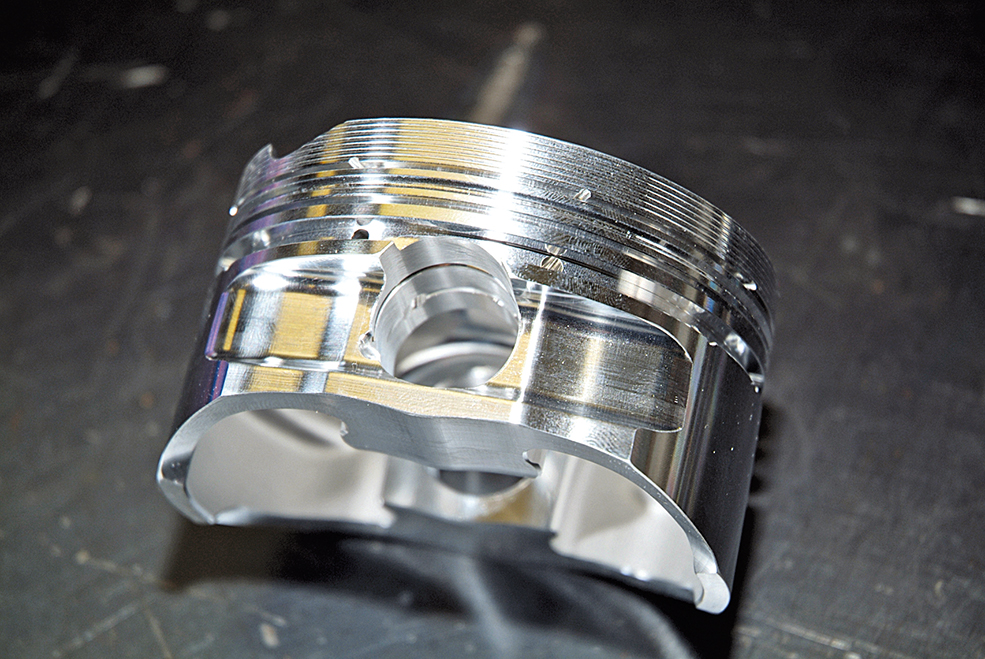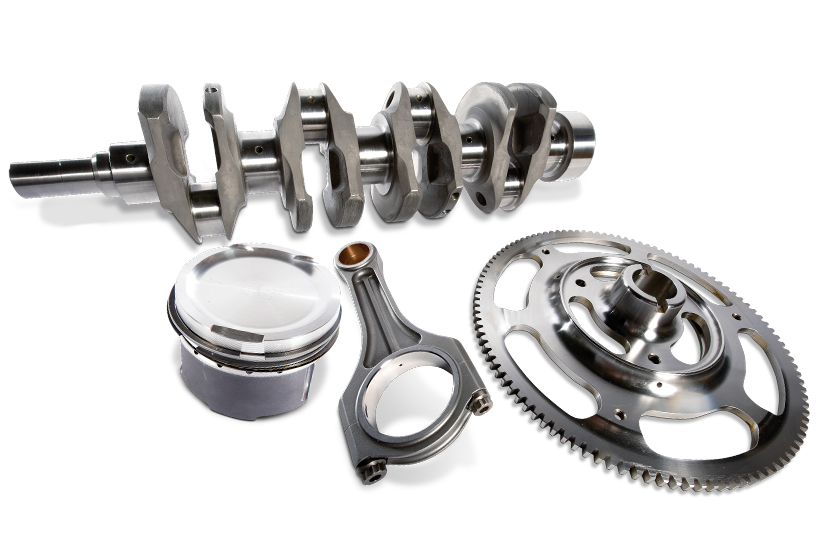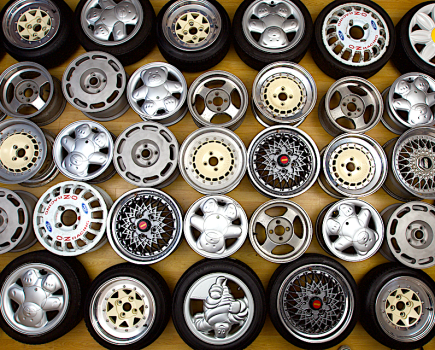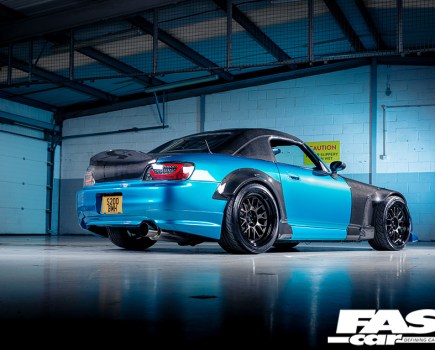We all want to tune our engines to have big power, but how do you ensure reliability along with it? That’s where engine internals strengthening comes in!
The strength and quality of your engine’s rotating mass is the key to your engine producing power for a worthwhile amount of time. Standard pistons, rods, and crankshaft may stand up to big power and revs for long enough to record a power run. But, give it sustained hard use, and the vast majority of engines will fail in spectacular style when power is raised.
Uprated components are stronger, often lighter, and can have other benefits. Combined, they enable your engine to survive when producing big power. Here’s our guide to engine internals strengthening.

When Do You Need Your Car’s Engine Internals Strengthening?
There are so many variables in finding the limits of engine internals that there are three choices with regard to answering when you need to think about engine internals strengthening. None of which are ideal.
- You can learn from others breaking parts.
- You can learn from breaking your own parts.
- Or the SWAG method (a Scientific Wild Ass Guess!).
The reason for these less than ideal solutions is even big budget race teams can never accurately tell the true limits of standard components. You can make educated guesses, but often these can be way off the mark. You also only know for sure when the part fails, or indeed doesn’t. It is a double edged sword in many respects. To be on the safe side people often change unnecessary components. However, if you just push them until they fail, parts can often take other components out with them.
Not all components in any one engine may be at the limit at the same time either. There are many engines where the pistons or the rods may be at their safe limit at a far lower level than the other parts. In addition, a surprising number of cars have crankshafts that can do over three times the power level. In rare occasions, there are cars that the engine block is likely to fail before the internals. If this happens, uprating the internals at all is a fruitless exercise. An example of a strong engine from factory with some limiting parts is the famous RB26DETT engine.
Crankshaft
The crank is the largest rotating component in any engine. It’s the part that transmits the power from the cylinders to the wheels via the transmission. You would think due it taking the combined power of all the cylinders it would need the most beefing up, but the crank is often the last component to be changed when going for big power. That isn’t to say there is no need for an uprated crankshaft, as there is. The most common reason for an uprated crankshaft is to increase the engine’s capacity by increasing the engine’s stroke. This gives better drivability and potentially more power too.
Not all cranks are as strong as others though. Due to the majority of aftermarket cranks being made from high quality forged or billet steel, this means they can take all the power you can throw at them without snapping. The other big advantage of billet steel cranks is they can be made lighter and better balanced for any given amount of strength. That in turn means it can spin at higher rpm safely, putting less stress on bearings and other engine components in the process.
Conrods
Conrod is short for connecting rod. Guess what? It’s a rod which connects things; the pistons to the crankshaft to be precise. There’s immense pressure on the conrods as not only have you got the exploding air fuel mixture in the cylinders pushing them downwards with incredible strength. You also have the rotating crankshaft pushing them back upwards just as violently. As power and rpm increases, this stress increases substantially. Due to these stresses, standard rods are usually pretty strong and often cope with power increases well. However, rpm increases, which go hand in hand with increased power, can lead to the standard rods failing. When rods fail it’s catastrophic. It usually ends with wrecking the engine block and leaving almost nothing salvageable from the engine.
Another common reason for rod failure in tuned turbo engines is detonation. If you can imagine the crankshaft moving the rod back up the cylinder while detonation occurring in the combustion chamber is forcing the piston downwards. When this happens the conrod is receiving incredible forces from both directions at once. Unless something else, such as the head gasket or piston fails first, the rod can bend, or even snap. As with the crankshaft, uprated rods are usually made of high quality forged or billet steel. They are also often lighter and better balanced than the standard items, but for rods the most important factor is strength.
The two terms you often hear when talking about uprated rods are I-beam and H-beam. The H and I signify the general shape of them when viewed side on. Without going into specifics, H-beams are generally stronger. However, I-beams do have their uses, especially as they are often smaller.
Pistons
These are the most commonly uprated components on tuned road cars, especially turbocharged ones. This is because they are at the front line of combustion; the things the fuel air explosions in the cylinders are in direct contact with. As you increase power, these explosions get bigger. Eventually they become too big for the standard pistons to handle, but this is not the only reason pistons get replaced with stronger items. Coming a close second is to adjust the compression ratio. Either raise it to increase power on certain engines, or lower it to enable the car to safely run high boost on other engines.
There are other considerations too, as pistons on an N/A engine are generally not designed to be able to dissipate the heat as well as a turbocharged lump. Engines with particularly wild cams need to have specially shaped tops to clear the cams. Particularly high revving engines often need certain parts to be strengthened due to the high speeds and forces involved. For example, a piston in an engine with an 88mm stroke at 6,000rpm will travel down the cylinder and back up again in just 0.005 seconds!
Most standard pistons are cast items. However, the thickness, style, and type of aluminum alloy used to make the pistons affect the power and rev limits of the piston more than it being cast or not. And some cast pistons are used on very high power engines. As good as cast pistons can potentially be, high performance and race engines almost always use forged or billet pistons. These items are are made from high strength aluminum alloys rather than steel.
Make sure you check out our pistons guide to learn all about how they work and when you need to upgrade them.

Should I Buy Cast, Forged Or Billet Parts When Strengthening Engine Internals?
Most standard components are cast. Although some cars from the factory have forged internals, they are rarely as strong as aftermarket forged internals. The final common word you hear when it comes to internals is the word ‘billet’. All three words describe the process that creates them and have a big effect on component strength.
The cheapest, but also weakest, is casting. The iron, steel, or alloy are heated until they are a molten liquid and then are left to set at atmospheric or low pressure inside a mold. While casting should never be thought of as weak, ultimately, forged or billet components have higher potential if all else is equal.
Forged parts is the most common name when people think of engine internals strengthening. This is generally aluminum or steel heated till they are soft rather than molten, and then squeezed in a die under very high pressure to make the component. As you might imagine, this process makes them very dense and therefore incredibly strong for their size.
The final type is billet, which means the component is made from a solid piece of high-quality billet aluminum or steel. This is usually a material that would either lose too much strength by being forged, or is simply too difficult to forge. To make billet components they use machinery to cut a solid billet into the correct shape. This can be a time consuming process, which also wastes most of the metal. For these reasons, billet components can be very expensive. On the other hand, for specialized one-off internals, the machine work for a billet part is less than making a die for forging. As a result, billet internals are often reserved for big-money motorsport applications.
Strengthening Engine Components
After a component is made, or even to improve a standard part, there are processes than can strengthen it. The most common method are shot peening and nitriding. Shot peening, which is mostly done to conrods, involves blasting the rods with steel shot. This hardens the metal and removes any raised casting points which would normally be the weak point of the rod. This process is said to increase strength of a rod by up to 30%. Nitriding is a process normally done to crankshaft bearing surfaces. It is a complex procedure involving nitrogen-rich gas (hence the name) to give the metal an ultra-hard surface layer.
Balancing Components
An engine’s rotating mass must be balanced if you want it to live for any serious amount of time. The higher you are planning to rev the car, the more crucial this is. For example, at 7,500rpm a crank spins at 125 times a second. Even at idle speed a crank is spinning at about 16 times a second. You can imagine the vibrations created if heavy metal engine components are out of balance at this speed. The stress is enough to wear out bearings and even snap components in two in a short space of time! Cranks are balanced along their rotation as you would expect. Pistons are balanced to all have the same weight. Conrods are balanced to have equal weights, but also balanced end to end.
On top of this, a crank balancer is fitted to the end of the crank to help absorb vibration. When it comes to uprating your engine internals, specialists can balance it to levels far in excess of the factory balancing. Uprated crank dampers are also available which do a far better job than the standard items. The combination of all this, along with stronger and lighter components, can help your car rev safely far in excess of the standard rev limit.
Words: Rich White.




